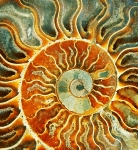Hello,
My name is kybele. I am working on an application which requires a water bath heater. After I send my proposal customer came back asking for higher efficiency. First, I designed the heater for 75% fuel efficiency. Later I changed the burner system and I increased the efficiency max 85%. However, the customer is still asking for higher efficiency and stating to heating fuel gas or using such system will pre-heat the air like in API style heaters.
As far as I know, water bath heaters can be designed maximum for 85% efficiency. My question is there any way to increase the efficiency more than 85% in the water bath heaters.
In advance, I thank you very much for your response.
Kybele
|
|

Direct-Fired Immersion Heater Efficiency
Started by kybele39, Jul 01 2010 08:02 AM
4 replies to this topic
Share this topic:
#1

Posted 01 July 2010 - 08:02 AM
#2

Posted 01 July 2010 - 08:53 AM
Kybele:
I presume that you are designing a direct, gas-fired, water bath heater. I also presume that by “efficiency” you mean the amount of effective heat value content in your content that is transferred to the water bath.
If you are proposing a burner whose firing efficiency is as high as you can obtain, then the heat transfer efficiency in your direct-fired tube is basically governed by two factors – not the burner:
- The amount of radiation heat transfer area allowed; and
- The amount of convection heat transfer area allowed.
In a direct -fired, water bath heater you are greatly affected by the limited amount of heating surface that you can reasonably build into the firing tube. Usually, the radiation section is very limited and in order to increase the amount of heat transferred you are forced to increase the convection section – thereby increasing the amount of pressure drop through the firing tube. When you have to increase the convection section you usually cannot support a natural draft type of burner and you must resort to either a forced draft or an induced draft blower – or both – in your firing system. This complicates the control scheme on the burner and (as expected) raises the capital cost of the unit.
We have no detailed basic data from you – not even a sketch – and so, it is quite impossible to offer a specific response to your question. I am forced to submit a general response instead of a direct one: the general method of increasing the heat transfer efficiency is to add firing tube area. This is usually done by either increasing the diameter of the firing tube or its length – or both. As stated previously, this may increase the flue gas pressure drop through the firing tube and affect the type of burner – depending on whether you are using natural, forced, or induced draft to the combustion chamber.
I hope this helps.
#3

Posted 01 July 2010 - 10:14 AM
Dear Sir,
I would like to thank you for your quick response. I always read your posts. You have such a knowledge about oil and gas industry and others.
Back in your posts, I used forced draft burner and I extended the fire tube length. Efficiency that I described in my previous post is absorbed duty divided by the burner heat release after the heat losses subtracted. My duty is 14 MMbtu/hr/16.38MMbtu/hr (20,038btu/ft³) flue gas heat release per hour x 100 = 85% (based on Lower Heating Value)
I am using 8"fire tube in length of 240 ft per burner. And I am using 2 burners in my design.I have to watch for the heater dimension also and this is the longest that I have ever designed.(length is 45-50ft) and heater shell diameter is around 8 feet.
Is there any option for me to increase the efficiency for instance to 90% using electric heater to heat the combustion air although this may be an expensive solution. Since I cannot make the fire tube any longer.Plus there may be a condensation produced at the tube exhaust also.
Is heating the Combustion air for the water bath type of heaters is the common application or not?
Thanks again for your responses.
Kybele
I would like to thank you for your quick response. I always read your posts. You have such a knowledge about oil and gas industry and others.
Back in your posts, I used forced draft burner and I extended the fire tube length. Efficiency that I described in my previous post is absorbed duty divided by the burner heat release after the heat losses subtracted. My duty is 14 MMbtu/hr/16.38MMbtu/hr (20,038btu/ft³) flue gas heat release per hour x 100 = 85% (based on Lower Heating Value)
I am using 8"fire tube in length of 240 ft per burner. And I am using 2 burners in my design.I have to watch for the heater dimension also and this is the longest that I have ever designed.(length is 45-50ft) and heater shell diameter is around 8 feet.
Is there any option for me to increase the efficiency for instance to 90% using electric heater to heat the combustion air although this may be an expensive solution. Since I cannot make the fire tube any longer.Plus there may be a condensation produced at the tube exhaust also.
Is heating the Combustion air for the water bath type of heaters is the common application or not?
Thanks again for your responses.
Kybele
#4

Posted 01 July 2010 - 12:55 PM
Kybele:
Thank you for the added basic data. This helps tremendously in getting down to the accurate, existing facts and the crux of the problem.
Since you have forced draft, I believe that there is one feature that you can employ to achieve a higher heat recovery within the fire tube – at least, if you can mechanically apply it.
Internal fins can be applied to the fire tube in the convection section and these will yield a higher heat recovery there. This has been demonstrated empirically by Cleaver-Brooks, a boiler manufacturer in about 1965 -1970, if I recollect correctly. Cleaver-Books supplied packaged steam boilers that produced a higher heat recovery based on their using internally finned fire tubes. The fins, of course, add more convection heat transfer area and consequently transfer more heat per length of fire tube than the conventional bare pipe. You may not obtain 90%, but you certainly should expect more heat transfer than from bare pipe – if done correctly. Of course, this will come at a price: the cost of adding the fins and the resultant higher pressure drop of the flue gas. Nothing is free.
Do not forget that you cannot expect to ever achieve 100% heat recovery. Recall your own statement: you will condense water or other condensables in the flue gas as you extract more heat from the flue gas. In my opinion, your client is trying to squeeze blood from a turnip. You are being asked to use the most inefficient direct-fired piece of equipment and obtain the highest heat transfer that can be specified. This is absurd and illogical thinking. If you want to have the highest efficiency in heating water, then you should be applying the concept of a water tube boiler – and not that of a fired tube apparatus. This is not only logical, but it has been proven in the field. Your client wants to have his cake and eat it too.
Using an electric heater to preheat the combustion air and/or the fuel gas is very INEFFICIENT as compared with extending the fire tube area. The electrical consumption employed is more cost than the equivalent extra fuel used to achieve the same effect in a larger heater. This is so due to the fact that the electrical energy originates from a very inefficient conversion of heat to electricity and then suffers the subsequent need for electrical transmission to point of consumption. If you crank out the specific numbers you will find that what I say is true. So, why propose it instead of making the heater larger?
I hope this experience helps.
#5

Posted 01 July 2010 - 01:21 PM
Dear Sir,
Thank you very much for your response to my post.
I will consider your valuable advise and focus on fin tube more instead of offering any other solutions. Thanks again.
Have a good day.
Kybele
Thank you very much for your response to my post.
I will consider your valuable advise and focus on fin tube more instead of offering any other solutions. Thanks again.
Have a good day.
Kybele
Similar Topics
Design Of Direct Contact After Cooler (Dcac) For Air Separation UnitStarted by Guest_Paulogeorge_* , 29 Jul 2025 |
|

|
||
Fired Heaters/ Burners/ Flue VelocityStarted by Guest_Lyne_* , 15 Mar 2024 |
|

|
||
Selection Type Of Heater For Refrigerated PropaneStarted by Guest_livetolove003_* , 07 May 2025 |
|

|
||
Electric Heater In Regeneration Absorption BatteryStarted by Guest_alaasleem2026_* , 01 Sep 2024 |
|

|
||
Chiller Efficiency Dependence On Cooling Water TemperatureStarted by Guest_Neha Vensiyani_* , 29 Apr 2024 |
|

|

 FB
FB







